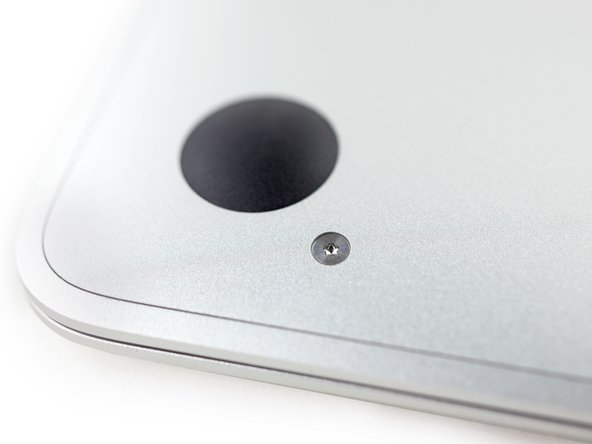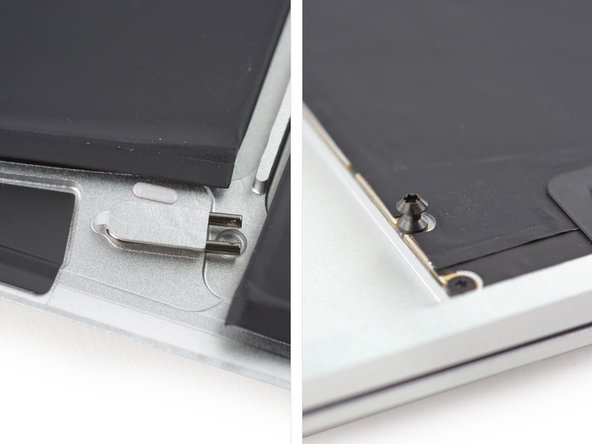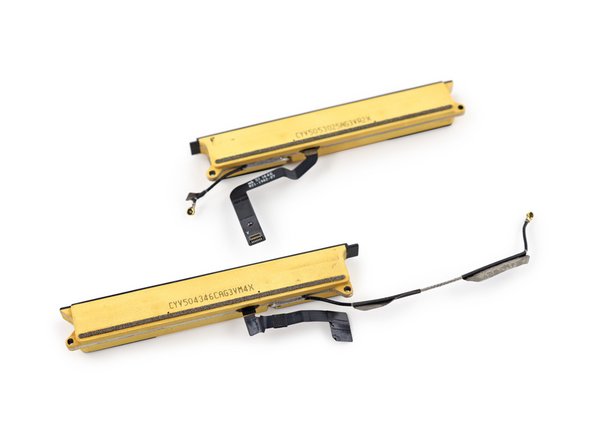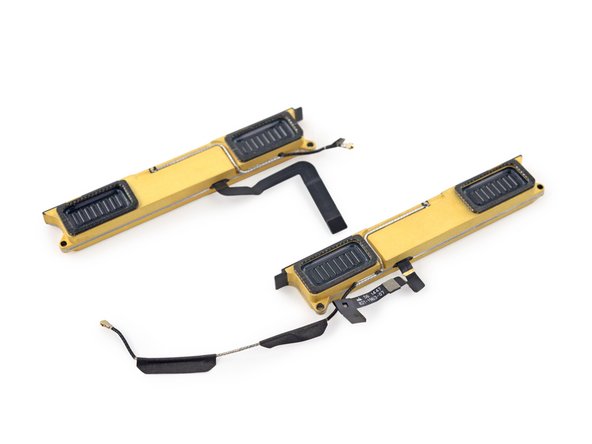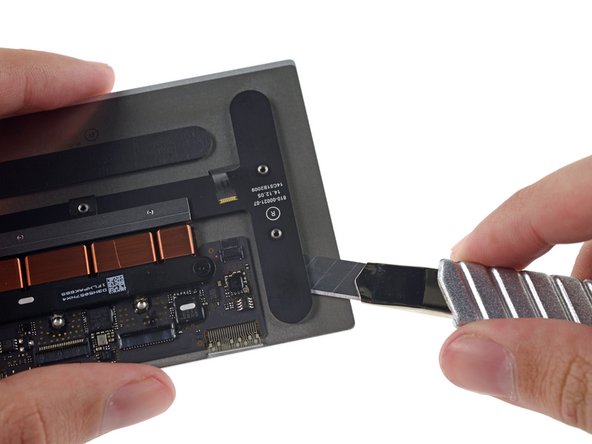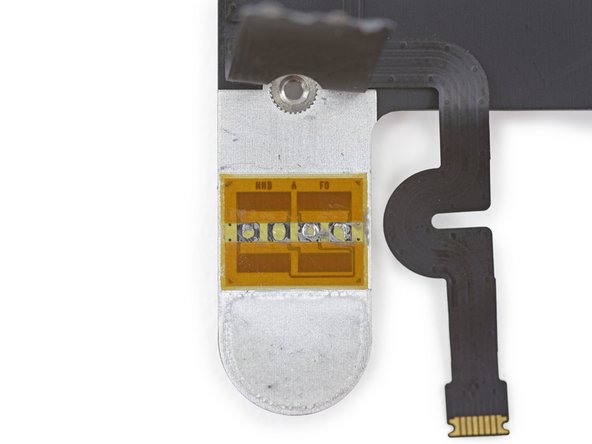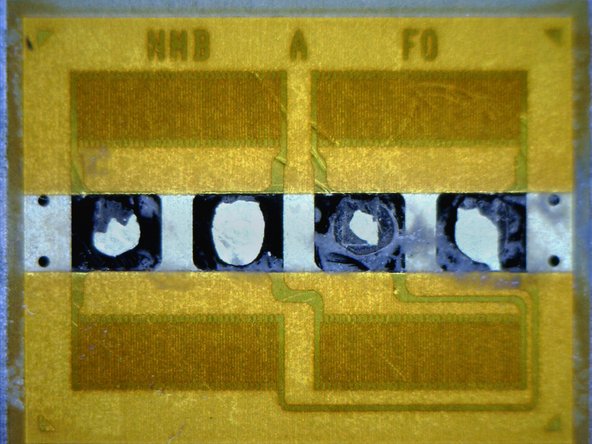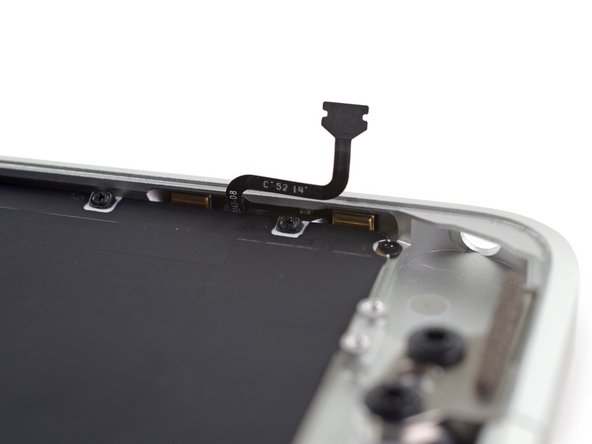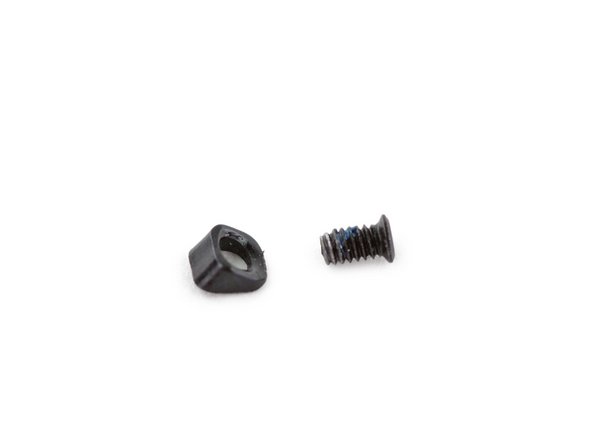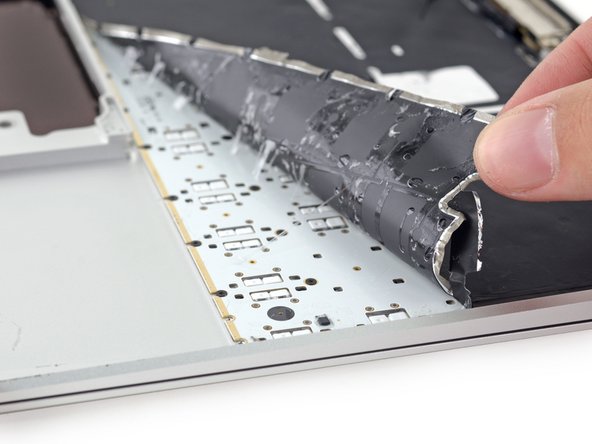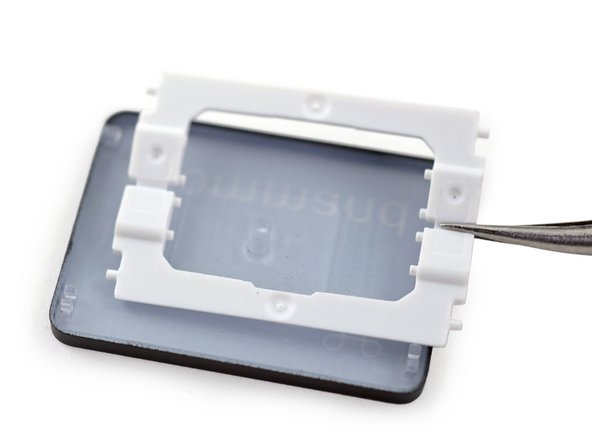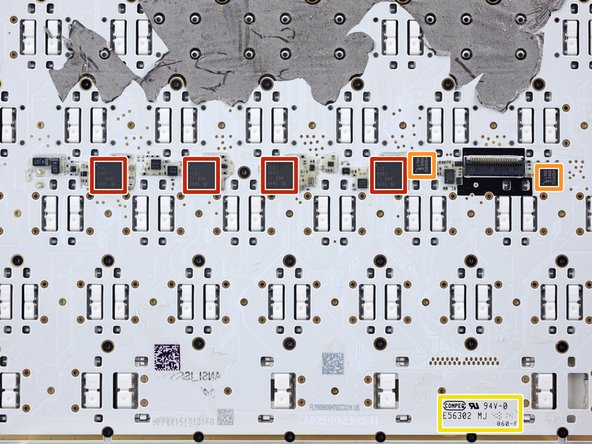Introduction
Apple describes its new Retina MacBook as "the future of the notebook." Its all-new design certainly has us intrigued. The whiff of aluminum in the air and the whisper of screws unwinding to reveal the mysteries within can only mean one thing: The teardown has begun. Join us as we expertly dismantle the Retina MacBook 2015.
Want to watch repair history unfold? Follow us on Instagram, Twitter, and Facebook!
What you need
Video Overview
-
-
Since it was announced on March 9th, we've been eager to get our hands on the sleek new MacBook. Before we tear inside this beauty, we take a glance at its specs:
-
12-inch, 2304-by-1440 pixel (~226 ppi) IPS "Retina" display
-
1.1 GHz or 1.2 GHz dual-core Intel Core M processor (optional 1.3 GHz processor available)
-
8 GB of 1600 MHz LPDDR3 memory
-
256 GB or 512 GB flash storage
-
Intel HD Graphics 5300
-
Single USB-C port
-
-
-
While we want to commend Apple for adopting the new USB Type-C standard, they've done so in a way that makes it impossible to use old adapters on new devices. The MagSafe and Thunderbolt ports of old are gone. The new MacBook has one USB-C to rule them all.
-
For comparison's sake:
-
10-watt iPad USB adapter (left)
-
29-watt USB-C power adapter included with the MacBook (middle)
-
60-watt MacBook Air Magsafe 2 (right)
-
Hopefully users will benefit from the standardization, and not trip over their cables too often.
-
-
-
The new MacBook is less than half the thickness of its 2009 ancestor, measuring 0.52 inches at its thickest point.
-
At 1.08" thick, the 5 pounds of polycarbonate-swathed 2009 MacBook dwarfs our 2.03 pound Retina MacBook.
-
Apple probably shaved off a lot of that weight in removing ports. Back in 2009 we had MagSafe, ethernet, Mini DisplayPort, 2x USB, audio, and a security slot.
-
We'd also remind you to say goodbye to your optical drive, but that ship has pretty much sailed.
-
-
-
Those are pretty short keys. Bursting from its cocoon is Apple's newly-designed keyboard, equipped with a butterfly mechanism. Let's see if this keyboard will go twice as high as the traditional scissor-switch mechanism.
-
We zoom in on the Retina display, described by Apple as the thinnest, most energy-efficient Retina display ever on a Mac. The pixels themselves have a larger aperture, enabling more light to come through, resulting in greater energy efficiency without compromising brightness.
-
-
-
Time to rip off that boring, plain ol' aluminum lower case, and get to the good—
-
What is this new devilry? Cables!? A battery and logic board in the lower case?
-
The standard pop-open-at-the-hinge practice still holds, but then the cables go taut. Then you have to hinge the case back forward to access the connectors and open the case.
-
What is this, a mid-gen iPhone?
-
The standard plastic clips of old are replaced with futuristic pegs and weird spring clips.
-
-
-
Reminiscent of the Macbook Pro 13" Retina released in March, this MacBook comes equipped with the fancy Force Touch trackpad. We disconnect the trackpad/keyboard cable for a little more maneuvering room.
-
With the springy trackpad/keyboard cable disconnected, we can fold the whole enchilada flat on the table. Time to survey the field and see what we're up against this time.
-
-
-
Wait, this is a notebook, right? Where's the battery connector?
-
At a loss, we play with this little yellow button for a bit. Boop.
-
We've seen something like this before—in the iPad, Apple loves to hide the battery connector under the logic board. This is the first time we've seen it in a laptop, so it looks like it's time for...
-
Our newly-minted battery isolation pick turns out to be just the trick we need to keep the juice away from the logic board's spring contacts.
-
-
-
In our quest to begin the Great Cable Disconnect of 2015, we find a tri-wing screw!
-
We finally disconnect the 3-in-1 display/power/I/O port cable that runs to the MacBook's lone USB-C port.
-
It's funny because while there are three functions, there's only one port, and no I/O board.
-
-
-
We guessed that the thinnest Retina display ever would come with some other changes—but this is one weird display connector!
-
We tweeze away the "audio board" connector that ties in the headphone jack and dual microphones.
-
Finally, the two halves are free to fly. Now it's time to get to that logic board!
-
-
-
-
We carefully lift the lovely logic board from its aluminum nest.
-
Apple's use of the new Intel Core M processors allows for smaller form factors and fun little heat sink covers.
-
The heat sink is nicely machined to provide multiple points of contact on the logic board—perhaps even to cool the reverse side of the logic board a bit.
-
-
-
It's time to put the chips on the table! Let's see what this logic board has to offer:
-
Elpida/Micron FB164A1MA-GD-F 8 GB LPDDR3 Mobile RAM
-
Toshiba TH58TFT0DFKLAVF NB2953 128 GB MLC NAND Flash memory (+ 128 GB on the reverse side for a total of 256 GB)
-
NXP 11U37 microcontroller; 128 kB flash, 10kB SRAM
-
SMSC 1704-2 Temperature Sensor
-
Texas Instruments SN650811 (probably power converter related to SN6501)
-
-
-
Humming a logical tune, we peruse the back side of the most logical of boards:
-
Intel SR23G Core M-5Y31 CPU (Dual-Core, 1.1 GHz, Turbo Boost up to 2.4 GHz) with Intel HD Graphics 5300
-
SK Hynix H9TKNNN4GDMRRR-NGM 4 Gb (512 MB) LPDDR2-SDRAM
-
Toshiba TH58TFT0DFKLAVF 128 GB MLC NAND Flash
-
Elpida/Micron J4216EFBG-GNL-F DDR3 SDRAM
-
Broadcom BCM15700A2, appears to be a wireless networking chipset
-
Murata 339S0250 (Likely an iteration of the 339S02541 Wi-Fi module found in the iPad Air 2)
-
Texas Instruments/Stellaris LM4FS1EH SMC Controller (Replacement codename for TM4EA231)
-
-
-
In 2011, Apple acquired Anobit, an Israeli flash memory controller designer.
-
Four years later, it looks like they might now have something to show for it—thanks to Anandtech's report that the MacBook's SSD looked a little unusual in the system profiler, we took our heat gun to the SK Hynix SDRAM to see what was hiding underneath.
-
Where we expected to see something by Samsung or Toshiba, we found an unbranded chip with a very Apple-esque part number: 338S00055.
-
-
-
It was too much to hope that the battery would be secured with a few screws, MacBook Air-style. Time to break out the heat and the cards.
-
We had hoped this would have provided room for a few screws, or some of those fancy little clips we saw on the case. Apparently not.
-
iOpener on a lower case? This just feels weird...
-
Scrape, peel, scrape, peel. Look at all that nasty adhesive.
-
-
-
Ugh! Even the center cell of the battery is glued down, and we had hoped the sticky cells we found in the new 13" MacBook Pro wouldn't be a trend...
-
To complicate the procedure, the battery sits down in a well; the only safe place to pry is over this aluminum wall.
-
Well, it's finally out—in all its multi-segmented glory.
-
-
-
In order to power this slender gadget, Apple produced this form-fitting 7.55 V, 39.71 Wh, and 5263 mAh battery.
-
According to the specs, this is just a hair more than you get from this year's almost-pudgy-by-comparison, 5100 mAh MacBook Air 11"—though Apple touts equal battery performance of up to nine hours surfing the net, or ten hours of iTunes video playback.
-
-
-
Finally, we reach one of the most talked-about trackpads in town. As we could expect, the Force Touch trackpad in the Retina MacBook looks like a slimmer, daintier version of the one we found in the 13" MacBook Pro.
-
Once we cut away the bracket, we get a clear view of the Taptic Engine.
-
-
-
Only four strain gauges? Seems unlikely... Time to hunt around.
-
Ahah! Some strange rubbery glue was holding a cable over the second half of each strain gauge pair.
-
As we found previously in Apple's Force Touch, the strain gauges on this trackpad sense pressure from your fingers without really moving.
-
-
-
Well at least the audio assembly is modular, allowing easy removal of the audio jack board. But that means the dual microphones are left behind.
-
Behind the keyboard that is—curses!
-
Wait, are those screws? No rivets? We can actually get in? Nice!
-
To be fair, that screw you see in the corner is a pentalobe—a P2. That's an iPhone-sized screw. Apple doesn't really want to let us in.
-
-
-
Three pentalobes later...
-
...and 10 Phillips screws with weird sloping spacers, allowing them to secure the keyboard at an angle...
-
...and finally two screws that fit into the case clips (throwback to step 6).
-
We can't complain too much, I mean screws are better than adhesive—oh my goodness.
-
The adhesive backing (a kind of layered tape) is stuck to the keyboard, and barely holds together upon peeling.
-
Under the blanket of tape is a field of disheartening stars. Two pentalobes per key, plus a row at the top and bottom, for a total of 83, plus the three from before.
-
-
-
Daunted by the pentalobe-packed rear panel, we opt for frontal access. The keys pop off easily enough and seem to simply snap in place.
-
With very few moving parts inside, is it possible that this plastic butterfly mechanism might actually be a repair win?
-
The bracket is held in with tiny little clips; so cute.
-
-
-
Now to remove the display and get to that pesky multipurpose port!
-
Ahh, USB-C! This lil' guy combines charging, data transfer, and video output into a single port.
-
USB-C supports a top speed of 10 Gbps (this port maxes out at 5 Gbps), bi-directional 20V/5A power, and a reversible design aimed to solve all of your USB woes.
-
-
-
Apple has opted to transition from using a row of LEDs with a light guide panel, to installing individual LEDs beneath each key.
-
And behind those keys, we find:
-
An array of four Texas Instruments TLC5951 PWM LED Drivers
-
A pair of NXP PCAL6416A I/O Expanders
-
PCB maker Compeq reports increased revenues for March.
-
-
-
The MacBook 2015 Repairability Score: 1 out of 10 (10 is easiest to repair)
-
Proprietary pentalobe screws continue to make opening the device unnecessarily difficult, and new cable routing makes the procedure even trickier.
-
The USB-C port is secured by tri-wing screws, and buried under the display brackets, complicating replacement. Also, being the only port, it will experience more use and wear than a typical single-purpose port.
-
The battery assembly is entirely, and very solidly, glued into the lower case.
-
The Retina display is still a fused unit with no separate, protective glass. If the display needs replacing, it'll cost a pretty penny.
-
The processor, RAM, and flash memory are soldered to the logic board.
-
20 Comments
Hello,
Have you checked the content of the power adapters?
Le commentaire. As you say, pentalobe is tamperproof, and surely most of us now have a screw driver set? About time we forgave Apple, and it's good for your merchandising business ;-)
Yeah I'm thinking the same… I vaguely got the point behind the complaints when iPhone 4 came out, but that is now five years ago, and I am sure that anyone trying to fix the MacBook has ordered some part for one of the *last five iPhone models* and gotten the pentalobe screwdriver with it, so… And then the tri-wing screws just get a quick mention, although tri-wing screwdrivers are far less common by now, which just isn't fair :D
I could not find - what sound chip is used inside?









